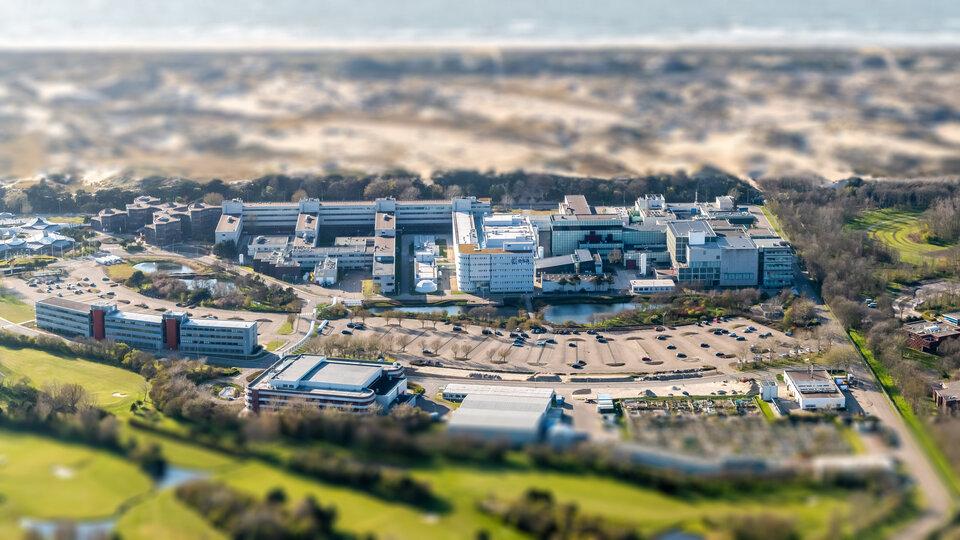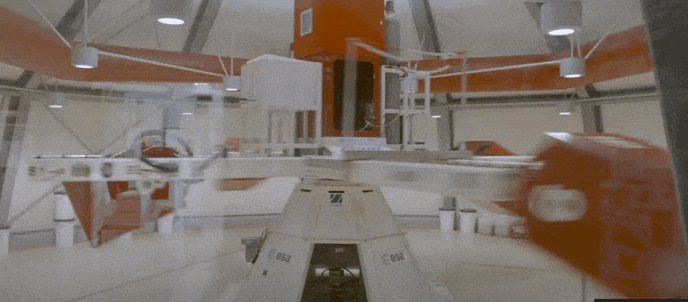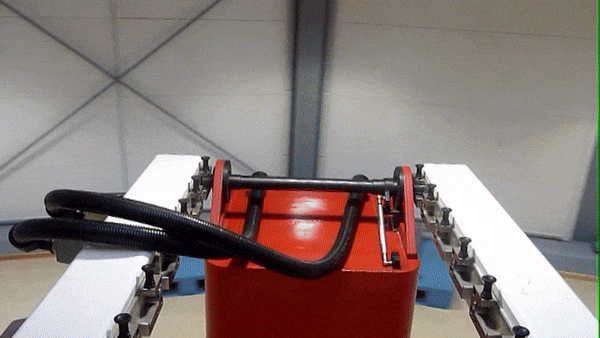ESA and UN offer worldwide access to hypergravity testing
ESA and the United Nations Office for Outer Space Affairs are opening the second round of their HyperGES fellowship, part of the Access to Space For All Initiative, offering student teams around the globe the chance to perform hypergravity experiments using the Large Diameter Centrifuge at ESA’s ESTEC technical centre in the Netherlands, with a particular focus on developing nations.
The LDC is an 8-m diameter four-arm centrifuge that gives researchers access to a range of hypergravity up to 20 times Earth gravity for weeks or months at a time.

At its fastest, the centrifuge rotates at up to 67 revs per minute, with its six gondolas placed at different points along its arms weighing in at 130 kg, and each capable of accommodating 80 kg of payload.
The result is that researchers are able to increase the force of gravity at the turn of a dial. The LDC is popular with life and physical science teams, as well as for commercial experiments. Internal ESA teams use the centrifuge to see how candidate spacecraft materials and components would respond to the violent accelerations involved in launching into space.
The idea behind this new fellowship is to widen LDC access to teams from all over the world, particularly for teams from developing countries, who may otherwise lack access to such equipment. It is formally known as the ‘United Nations / European Space Agency Fellowship Programme on the Large Diameter Centrifuge Hypergravity Experiment Series’, or HyperGES for short.

The first round winning team came from Mahidol University, Thailand, mounting an investigation into the response of watermeal – the smallest flowering plant on Earth, even smaller than the more familiar duckweed – to changing gravity levels, to assess its usefulness for space-based life support systems. The team is currently developing their hypergravity experiment.
For the second round of HyperGES, teams of students from all over the world – with particular attention to developing countries – supported by scientists and researchers are invited to submit their application by 28 February 2022.
To help guide applicants in developing their proposals, ESA has supported UNOOSA in the preparation of a dedicated webinar series.

The series provides an overview of the fundamentals, special characteristics, and advantages the hypergravity/microgravity environment has to offer, giving insights on the types of research, their applications and how to develop experiments for this unique environment. The webinar series is available here.
UNOOSA Director Simonetta Di Pippo comments: "Owing to the joint work of the Office and its partners, the Access to Space for All Initiative is playing a key role to bridge the space divide. By providing access to cutting edge facilities such as the Large Diameter Centrifuge to all Member States of the United Nations, ESA is reaffirming its commitment as partner in the Access to Space for All Initiative. I am particularly keen and excited to see potential results and distinctive applications which can contribute to the achievements of the Sustainable Development Goals”.

ESA Director of Technology, Engineering and Quality and Head of ESTEC Franco Ongaro adds: “We are proud to be part of UNOOSA Access to Space for All Initiative. In ESTEC, we have about 35 research laboratories that allow industry and scientists to achieve their research goals. We thank UNOOSA for extending access to the Centrifuge, operating as an important element of these laboratories, to the rest of the world as well. We look forward to the results of the HyperGES Announcement of Opportunity!”















 Germany
Germany
 Austria
Austria
 Belgium
Belgium
 Denmark
Denmark
 Spain
Spain
 Estonia
Estonia
 Finland
Finland
 France
France
 Greece
Greece
 Hungary
Hungary
 Ireland
Ireland
 Italy
Italy
 Luxembourg
Luxembourg
 Norway
Norway
 The Netherlands
The Netherlands
 Poland
Poland
 Portugal
Portugal
 Czechia
Czechia
 Romania
Romania
 United Kingdom
United Kingdom
 Slovenia
Slovenia
 Sweden
Sweden
 Switzerland
Switzerland


























